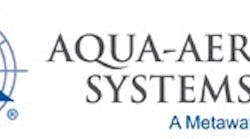In the late '90s, organic and ammonia loadings to Leacock Township, PA STP increased to the point where they routinely exceeded the nominal design values. The plant was originally designed to handle influent BOD5 of 250 mg/l but was receiving an average of 340 mg/l. These excessive loadings would lead to unsuccessful BOD reduction and nitrification if a long-term solution to provide additional oxygen was not found.
Aqua-Aerobic proposed a couple options to the township's engineer, Rettew Associates. One option was to build a third SBR basin, but obviously this would be costly. A second option was to increase the amount of air being put into the reactors by replacing the existing (2) 10-tube retrievable coarse-bubble diffused air system with 20 retrievable fine-bubble tubes, which would increase oxygen transfer and promote successful BOD reduction and nitrification.
Rettew decided to go with the new fine-bubble diffuser assemblies, which were retrofitted onto the existing coarse-bubble track beams. This was completed in one day without dewatering the basins. Existing blowers were re-sheaved to operate at a higher capacity and the motors upgraded from 15 to 20 HP, so there was no need to purchase new blowers. Recent effluent BOD has been less than 5 mg/l, TSS less than 10 mg/l, ammonia nitrogen less than 0.70 mg/l and Total P less than 2 mg/l. I have also attached photos (at 72 dpi). The diffuser photo shows the new fine bubble assembly on the existing coarse bubble track being lowered back into the basin.


